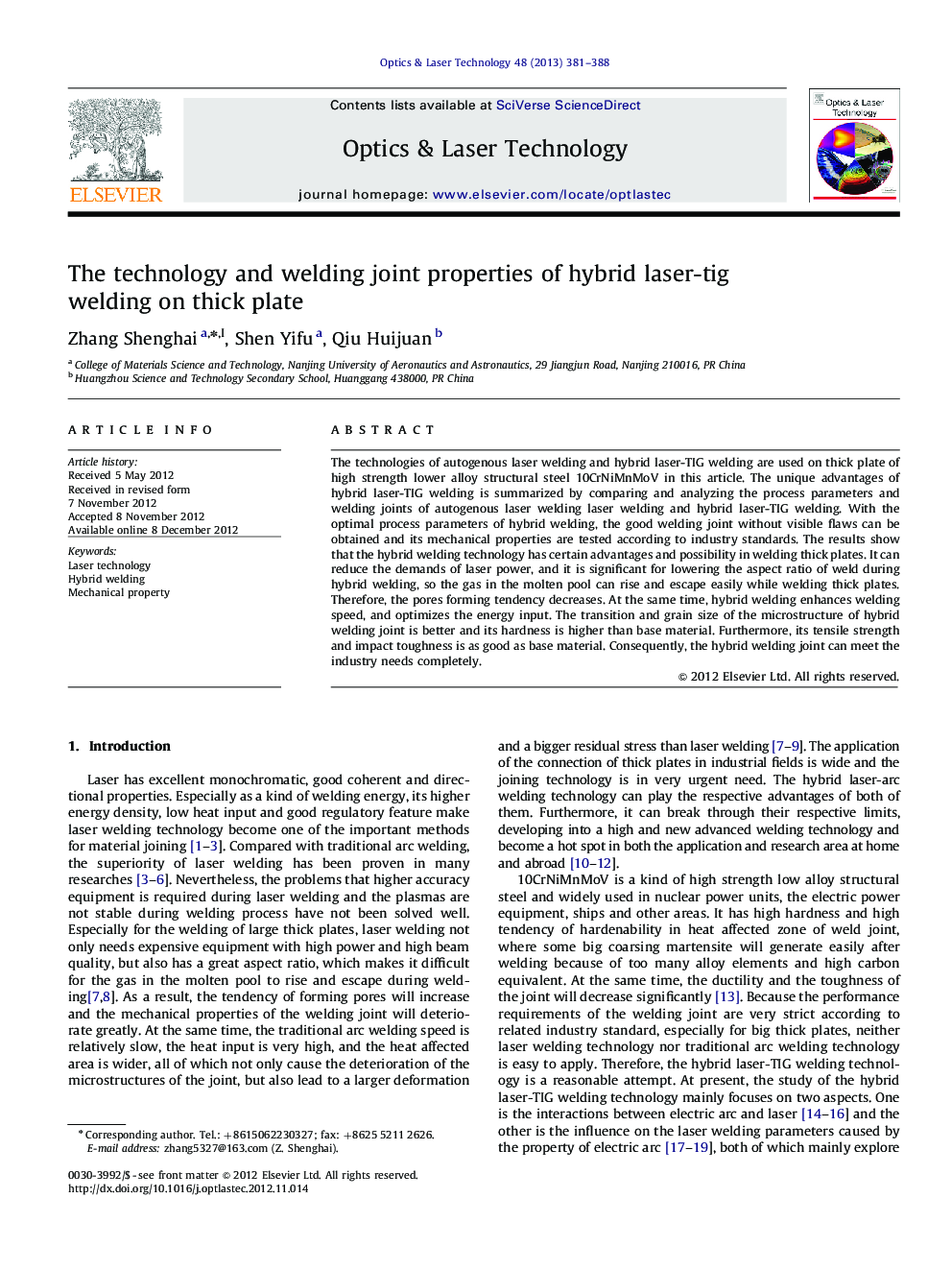| Article ID | Journal | Published Year | Pages | File Type |
|---|---|---|---|---|
| 734490 | Optics & Laser Technology | 2013 | 8 Pages |
The technologies of autogenous laser welding and hybrid laser-TIG welding are used on thick plate of high strength lower alloy structural steel 10CrNiMnMoV in this article. The unique advantages of hybrid laser-TIG welding is summarized by comparing and analyzing the process parameters and welding joints of autogenous laser welding laser welding and hybrid laser-TIG welding. With the optimal process parameters of hybrid welding, the good welding joint without visible flaws can be obtained and its mechanical properties are tested according to industry standards. The results show that the hybrid welding technology has certain advantages and possibility in welding thick plates. It can reduce the demands of laser power, and it is significant for lowering the aspect ratio of weld during hybrid welding, so the gas in the molten pool can rise and escape easily while welding thick plates. Therefore, the pores forming tendency decreases. At the same time, hybrid welding enhances welding speed, and optimizes the energy input. The transition and grain size of the microstructure of hybrid welding joint is better and its hardness is higher than base material. Furthermore, its tensile strength and impact toughness is as good as base material. Consequently, the hybrid welding joint can meet the industry needs completely.
► Hybrid welding technology can reduce the request for laser power and power density. ► Rational analysis on the advantages of hybrid welding in welding big thick plates. ► The influence of the hybrid welding technology on the joint structure property is analyzed. ► Mechanics performance testing, the tension test and the impact experiment on the seam center and heat affected zone are done according to relevant standards.
